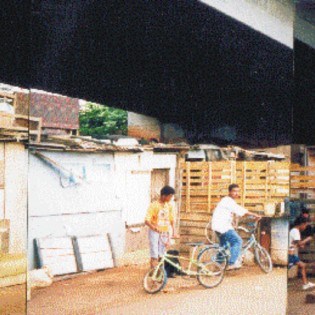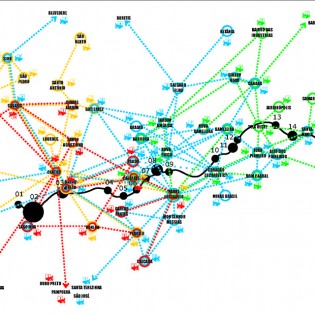An occupation plan for the residual areas surrounding the East-West Expressway in Belo Horizonte. The research analyses all the factors that might influence the choice of a programme for each of the 18 viaducts along the expressway. Among the aspects taken into consideration were the opinions of those living nearby, traffic and public transportation data, pedestrian accessibility, possible recycling materials, the existing uses, and the security/violence perception in the vicinity of each structure All that was later summarised in diagrams presenting the collated data and the plan’s methodology.
Sponsored by the Ministry of Public Works’ Central Areas Rehabilitation Programme, the project’s goal is to present a list of the most recommended programmes for each viaduct and, most importantly, to persuade the municipality to reactivate these urban voids so as to integrate them into the city in a social, environmental, and functional manner.
The research started at the same time as city hall was using bulldozers to demolish the shanties there. Instead of merely reproaching the destruction or endorsing the informality of such occupations, the project’s strategy is centred on making these areas available for all inhabitants, counting on the participation of the social actors directly affected by these hovels.



















